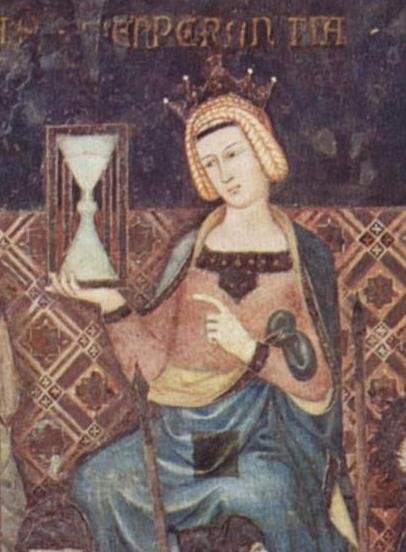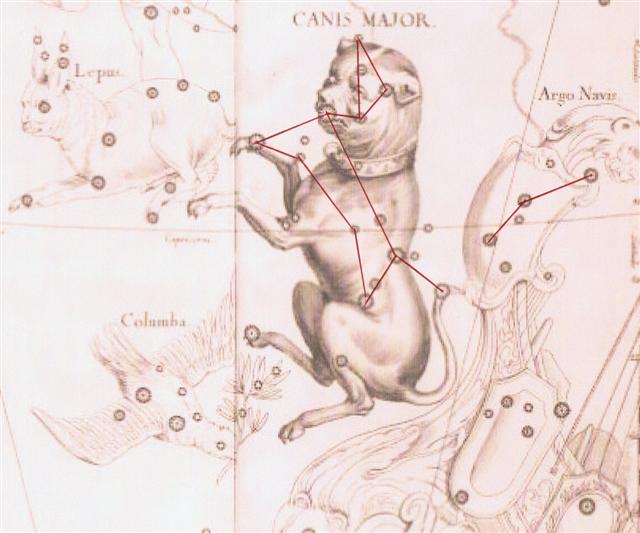The opening (vaha) for a pair of sharks
(mago) was evidently followed 8 nights later by the pair of
sharks themselves:
|
σ
Andromedae
(3.0), ι
Ceti (3.3), ζ Tucanae (3.5),
ρ
Andromedae,
π Tucanae (3.7) |
no star
listed (4) |
ANKAA
= α Phoenicis,
κ Phoenicis (5.0) ALPHARD (α
Hydrae)
|
99 |
|
March 21
(80) |
22 |
23 |
|
no glyph |
 |
 |
|
Ca1-1 |
Ca1-2 |
|
koia |
ki
te hoea |
|
September 20 |
21 (264) |
EQUINOX |
|
CHANG
SHA (Long Sand-bank) = ζ Corvi
(186.3) |
INTROMETIDA = ε Crucis
(187.4),
ACRUX
= α Crucis
(187.5) |
γ Com. Berenicis
(188.0), σ Centauri (188.1),
ALGORAB
= δ Corvi
(188.5),
GACRUX = γ Crucis
(188.7) |
|
ω
Gemini
(105.4),
ALZIRR
= ξ Gemini
(105.7),
MULIPHEIN = γ Canis Majoris
(105.8),
MEKBUDA = ζ Gemini
(105.9) |
7h
(106.5)
no
star listed (106) |
WEZEN
(Weight)
= δ Canis Majoris
(107.1), τ Gemini (107.7), δ Monocerotis (107.9) |
no
star listed (108) |
|
July
1 |
2 |
3 |
4 (185) |
 |
 |
 |
 |
|
Ca4-26 |
Ca4-27 |
Ca4-28 (104) |
Ca4-29 |
|
erua tamaiti |
kua vaha te mago erua |
|
December 31 |
January 1 |
2 |
3
(368) |
|
Al Na'ām-18 /
Uttara Ashadha-21
NUNKI
= σ Sagittarii
(288.4), ζ Cor. Austr. (288.5),
MANUBRIUM = ο Sagittarii
(288.8), ζ
Aquilae (288.9) |
19h
(289.2)
λ Aquilae
(Ant.) (289.1), γ Cor. Austr (289.3),
τ Sagittarii
(289.4), ι Lyrae (289.5), δ Cor. Austr. (289.8)
|
Al Baldah-19
AL
BALDAH
= π
Sagittarii,
ALPHEKKA MERIDIANA = α Cor. Austr.
(290.1), β Cor. Austr. (290.2) |
ALADFAR = η Lyrae
(291.1),
NODUS II = δ Draconis
(291.5), ψ
Sagittarii (291.6), τ Draconis (291.7), θ Lyrae
(291.8) |
|
λ
Gemini (109.4),
WASAT
(Middle)
= δ Gemini
(109.8) |
no
star listed (110) |
ALUDRA (Virgin)
= η Canis Majoris
(111.1),
PROPUS = ι Gemini
(111.4),
GOMEISA = β Canis Minoris
(111.6) |
ρ
Gemini (?) (112.1),
Eskimo Nebula = NGC2392 Gemini
(112.2)
ANTARES (α Scorpii)
|
|
July
5 |
6 |
7
(188) |
8 |
 |
 |
 |
 |
|
Ca5-1 |
Ca5-2 (107) |
Ca5-3 |
Ca5-4 |
|
E hua ki te henua - ka huki |
te hau tea - te henua |
kua hua |
te henua |
|
January 4 |
5
(370) |
6 |
7 |
|
ω Aquilae (292.1),
ρ Sagittarii
(292.6), υ Sagittarii (292.7) |
π Draconis,
ARKAB PRIOR = β¹ Sagittarii
(293.0),
ARKAB POSTERIOR = β² Sagittarii,
ALRAMI
= α Sagittarii
(293.2),
χ
Sagittarii
(293.6) |
DENEB OKAB = δ Aquilae (Ant.)
(294.0),
α
Vulpeculae
(294.9) |
ν Aquilae (Ant.)
(295.0),
ALBIREO = β Cygni
(295.5) |
|
Al
Dhirā'-5 /
Punarvasu-7 /
Mash-mashu-Mahrū-10 (Western One of the
Twins)
CASTOR (Beaver)
= α Gemini
(113.4) |
ANA-TAHUA-VAHINE-O-TOA-TE-MANAVA-7
(Pillar for elocution)
υ
Gemini (114.0),
MARKAB PUPPIS = κ Puppis
(114.7), ο Gemini (114.8),
PROCYON
= α Canis Minoris
(114.9) |
α
Monocerotis
(115.4), σ Gemini (115.7) |
Mash-mashu-arkū-11 (Eastern One of the
Twins)
κ
Gemini (116.1),
POLLUX
= β Gemini
(116.2), π Gemini (116.9) |
|
July
9 |
10 |
11 |
12 |
 |
 |
 |
 |
|
Ca5-5 |
Ca5-6 (111) |
Ca5-7 |
Ca5-8 |
|
kua iri i te rakau |
ihe tamaiti |
erua mago |
|
January 8 |
9 |
10 |
11 |
|
ALSAFI = σ Draconis
(296.0), μ Aquilae
(296.3), ι Aquilae (Ant.) (296.8),
κ Aquilae (Ant.) (296.9) |
ε Sagittae (297.1),
σ Aquilae (Ant.) (297.4),
SHAM
(Arrow)
= α Sagittae
(297.8) |
β Sagittae (298.0),
χ Aquilae (298.3), ψ Aquilae (298.8) |
υ Aquilae (299.1),
TARAZED = γ Aquilae
(299.3), δ Sagittae (299.6), π Aquilae (299.9) |
For the C text I will use the
dates according to the Gregorian calendar aligned with
the star positions as they happened to be at the time when Easter
Island was made a part of the kingdom of Spain:
...
On the following day, 20 November 1770,
Commander José Bustillo took formal possession
of Easter Island 'in the name of the King and of
Spain, our Lord and Master Don Carlos the
third', renaming the island 'San Carlos'.
Several hundred Rapanui - probably
members of the Koro 'o 'Orongo tribe of
the eastern 'Otu 'Iti - observed the
ceremony not far from Poike's parasitic
cones Parehe, Teatea, and Vai
'a Heva, on the tops of which the Spaniards
had planted three crosses. Following three
boisterous 'Viva el Rey!'
for each cross, the land party let off three
salvos of musketry, whereupon the two Spanish
vessels San Lorenzo and Santa Rosalia
responded with 21 cannon salutes ...
Probably March
21 was illustrated in Ca1-1. This was a day after the northern
spring equinox and because time flows it should have
been necessary
to wait until midnight and the beginning of March 22
before this first day glyph could be engraved in the wood.
... Time flows and the first notch for a
'night' (day) cannot be counted and carved into the wood
until the first day has been measured in full. Therefore
Ca1-1 should correspond to the completion of the first
day = at the beginning of the 2nd day of such a year
which is beginning with March 21. Similarly should not
the first day of the 2nd half of the year be noted down
until at the beginning of its 2nd day ...

What stars rose together with the Sun at 0h
changes over time. Earlier I thought the heliacal stars at Ca1-1
were at *1 at the time of rongorongo (ca 1842 AD):
|
March 21 |
22 (81) |
23 |
|
no glyph |
 |
 |
|
Ca1-1 |
Ca1-2 |
|
koia |
ki te hoea |
|
Al
Fargh al Thāni-25 |
Uttara Bhādrapadā-27
/
Wall-14 |
χ Pegasi (2.1), θ Andromedae (2.7) |
|
0h (365.25) |
|
Caph,
SIRRAH
(0.5), ε Phoenicis (0.8) |
ALGENIB PEGASI
(1.8)
|
|
NAKSHATRA DATES: |
|
September 20 |
21 |
equinox (265) |
|
Alchita, Ma Wei
(183.1), Minkar
(183.7), ρ Centauri (183.9) |
Pálida
(184.6), Megrez (184.9) |
Hasta-13 /
Chariot-28 |
|
GIENAH (185.1),
ε Muscae (185.2), ζ Crucis (185.4), Zaniah
(185.9) |
But the
Gregorian calendar had been 'born' around 4 precessional days
earlier, and therefore the heliacal stars at Ca1-1 could have
been pushed ahead from *0 at the time of Gregory XIII to *4 at
the time of rongorongo - with Acrux (*4 + 183 = *187) at the
Full Moon. Or - as I have just suggested - Ca1-1 documented
the stars at *3, corresponding to 1770 AD - because (1842 - 1770)
/ 71 = 1.
There are 392 (side a) + 348 (side b) = 740
glyphs on the C tablet. Half that is 370 and this
was
the day number for January 5 at Al Rāmī
(The Archer, α Sagittarii):
|
σ Andromedae
(3.0), ι Ceti (3.3), ζ Tucanae
(3.5),
ρ Andromedae,
π Tucanae (3.7) |
no star listed (4) |
ANKAA
= α Phoenicis,
κ Phoenicis (5.0)
ALPHARD (α Hydrae)
|
103 |
|
March 21 (80) |
22 |
23 |
|
no glyph |
 |
 |
|
Ca1-1 |
Ca1-2 |
|
koia |
ki te hoea |
|
September 20 |
21 (264) |
EQUINOX |
|
CHANG SHA (Long Sand-bank) = ζ
Corvi
(186.3) |
INTROMETIDA = ε Crucis
(187.4),
ACRUX
= α Crucis
(187.5) |
γ
Com. Berenicis (188.0), σ
Centauri (188.1),
ALGORAB
= δ Corvi
(188.5),
GACRUX = γ Crucis
(188.7) |
|
λ Gemini
(109.4),
WASAT
(Middle)
= δ
Gemini
(109.8) |
no star listed
(110) |
ALUDRA (Virgin)
= η Canis
Majoris
(111.1),
PROPUS = ι
Gemini
(111.4),
GOMEISA = β
Canis Minoris
(111.6) |
ρ Gemini (?)
(112.1),
Eskimo Nebula =
NGC2392 Gemini
(112.2)
ANTARES (α
Scorpii)
|
|
July 5 |
6 |
7 (188) |
8 |
 |
 |
 |
 |
|
Ca5-1 |
Ca5-2 (107) |
Ca5-3 |
Ca5-4 |
|
E hua ki te
henua - ka huki |
te hau tea -
te henua |
kua hua |
te henua |
|
January 4 |
5 (370) |
6 |
7 |
|
ω Aquilae
(292.1),
ρ Sagittarii
(292.6), υ
Sagittarii
(292.7) |
π Draconis,
ARKAB PRIOR = β¹
Sagittarii
(293.0),
ARKAB POSTERIOR
= β² Sagittarii,
ALRAMI
(Archer)
= α Sagittarii
(293.2),
χ Sagittarii
(293.6) |
DENEB OKAB = δ
Aquilae (Ant.)
(294.0),
α Vulpeculae
(294.9) |
ν Aquilae (Ant.)
(295.0),
ALBIREO = β
Cygni
(295.5) |
... A
renewal could have begun
at Alzirr (ξ
at the right foot of
Pollux) and have ended a
week later with Antares
culminating at midnigh
... Wasat (δ)
was in the middle
of this week and in
glyph 107 we can see the
new virgin (aludra) earth
rising up in front
...
Al
Udra (The Virgin, η
Canis Majoris) was the
star at the tip of the
tail of the Great Dog:

Possibly this tail top of Canis Major was the motive
in Ca5-3, illustrating his offspring (kua hua).
|
Hua
1. Testicle. 2.
Figuratively:
son, hua tahi,
only son; fruits
of the earth; to
grow well (of
fruits). 3. To
cause a fight, a
quarrel.
Hua-ai,
generation, as
lineage of
direct
descendents;
contemporaries. Huahua, coccyx of bird, 'parson's nose':
huahua moa,
huahua uha.
Huataru,
a creeper
(Chenopodium
ambiguum).
Vanaga.
1. The same;
ki hua,
again, to
continue, to
strain, to
struggle, to
move, to repeat,
over and above.
Mq.: hua,
the same, to
return, to
recommence. 2.
To bloom, to
sprout; flower,
fruit (huaa);
huaa
tae oko, huaa
vahio, young
fruit; hua
atahi, only
son; huahaga,
fruit; mei te
huahaga o tokoe
kopu, the
fruit of thy
body; tikea
huahaga,
deceptive
appearance. P
Pau.: ua,
to be born;
huahaga,
lineage. Mgv.:
hua, to
produce (said of
trees, grain,
etc.), blooming
time of flowers,
abundance of
fruit. Mq.:
hua, to
produce, to bear
fruit. Ta.:
ua, to
sprout.
Huahua. 1.
Tailless fowl.
2. Vein, tendon,
line. 3. Mgv.:
huahua,
pimples covering
the face. Ta.:
huahua,
id. Mq.: hua,
tubercules. Sa.:
fuafua,
abscess on hand
or feet. Ma.:
huahua,
small pimples.
Pau.:
Hua-gakau,
rupture. Ta.:
áau,
entrails. Sa.:
ga'au,
id. Ma.:
ngakau, id.
Churchill.
1. Fruit. 2.
Egg. 3. Tā
hua =
'genealogical
writing' or
'same writing'.
Fischer. |
Midnight culminations of important stars were
comparably easy to observe and therefore suitable for use in
calendar structures. At the time of rongorongo Antares would
have culminated at midnight in July 11 (192) and 192 = 384 / 2:
|
Antares at the time of rongorongo: |
|
Rising in the east at sunset |
June 1 (152) |
0 |
0 |
|
15
days from winter solstice |
July
6 (187) |
35 |
35 |
|
Culmination at
midnight |
July 11 (192) |
5 |
40 |
|
'Leap day' |
July 12 (193) |
1 |
41 |
|
Heliacal rising |
November 25 (329) |
136 |
177 |
|
Nakshatra day |
May
28 (148) |
184 |
361 |
But my date here, July 11, for
the midnight culmination of Antares was at the time of rongorongo
and 4 precessional days earlier the midnight culmination would
have been in ºJuly 7, at the time of Gregory XIII, at the time
of birth of his new calendar:
|
Antares at the time of Gregory XIII: |
|
Rising in the east at sunset |
ºMay
28 (148) |
0 |
0 |
|
15
days from winter solstice |
ºJuly 6 (187) |
39 |
39 |
|
Culmination at
midnight |
ºJuly 7 (188) |
1 |
40 |
|
'Leap day' |
ºJuly 8 (189) |
1 |
41 |
|
Heliacal rising |
ºNovember 21 (325) |
136 |
177 |
|
Nakshatra day |
ºMay
24 (144) |
184 |
361 |
15 (= 360 / 24) days from
winter solstice was always in day 187 counted from the beginning
of the year - it was a Sun event. The other events were defined
from the stars and these were moving ahead in the Sun year, with
a pace of 1 precessional night in ca 71 years.
Notably Ca5-2 is glyph
number 107, which could allude to *107 (ºJuly 6) + 80 = 187 (ºJuly
6).

|







